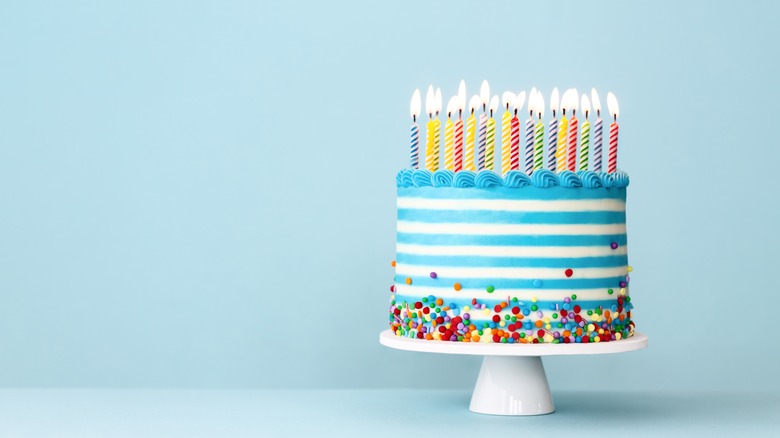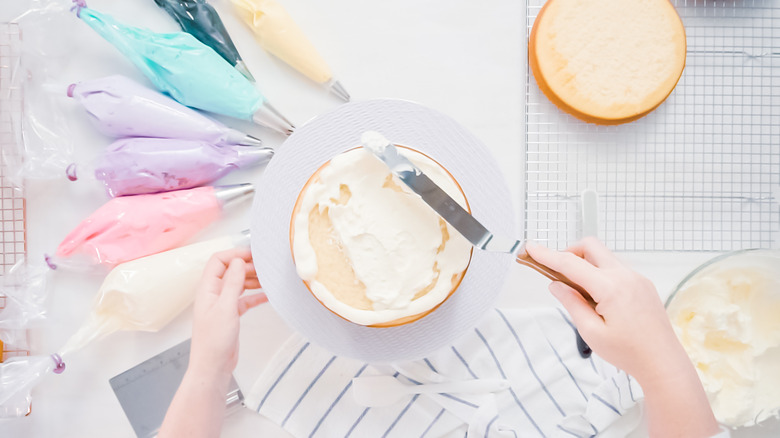The Disastrous Reason You Should Never Frost Cakes Before They Cool
If you need a reason to celebrate life, just stop and marvel at a cake. Rich with decadent layers that are stacked atop each other and frosted with a vibrant coating of colors, and can be adorned with sprinkles of sweetness, be it in the forms of actual sprinkles, toasted coconut flakes, or even drizzles of galaxy-inspired mirror glazes.
The sky's the limit when it comes to variations of cakes, ranging from familiar butter cakes and chocolate cakes to nutty Italian chestnut cakes (known as castagnaccios) and Scottish fruit cakes (aka dundee cakes), per Lacademie. And while it's important to use fresh ingredients and perfect measurements to make the cake ultra-moist and tasty, it's the frosting that enhances the visual appeal and richness of a cake.
Frosting, as explained by MasterClass, is typically composed of butter, sugar, and other flavorings. These can then transform into cream cheese frosting, American buttercream, whipped cream frosting, or Swiss meringue buttercream, and are usually thick, fluffy, and perfect for cake layers, via The Pioneer Woman. But whatever you do, try to refrain from frosting your cakes before they cool. Otherwise, you'll end up with a potentially disastrous exterior of a cake. Here's why that's the case.
Frosting is made of fat
Trivia question: What happens to butter when it lovingly lays its eyes on a heat source? It starts to "melt." (Get it?)
As The Kitchn explains, frosting is made up of fat (which is usually butter), and fat quickly starts to melt when exposed to heat. This also includes a piping hot or even a warm cake. In short, frosting a cake before it cools will probably yield melted frosting that won't spread evenly on the cake. Betty Crocker also notes that the melted frosting may "break" the exterior, creating unappealing cracks and messy crumbs when you run a spatula over it.
Luckily, there's an easy fix for this, and as Betty Crocker suggests, just wait two or three hours for the cake to cool down. It's also best to apply a crumb coat to the cake after it cools. Think of this as the "primer" for a cake before you start frosting as it helps to keep the entirety of the cake intact so crumbs don't start to loosen and fall off, via MasterClass. After the crumb coat is applied, Betty Crocker suggests putting the cake in the fridge for about a half hour, then relishing in the fact that you can finally start to frost your cake.
Making a cake is heaps of fun, but don't forget to exercise a little bit of patience before frosting it. That way, you can create a delectable work of art fit for any dinner party.

